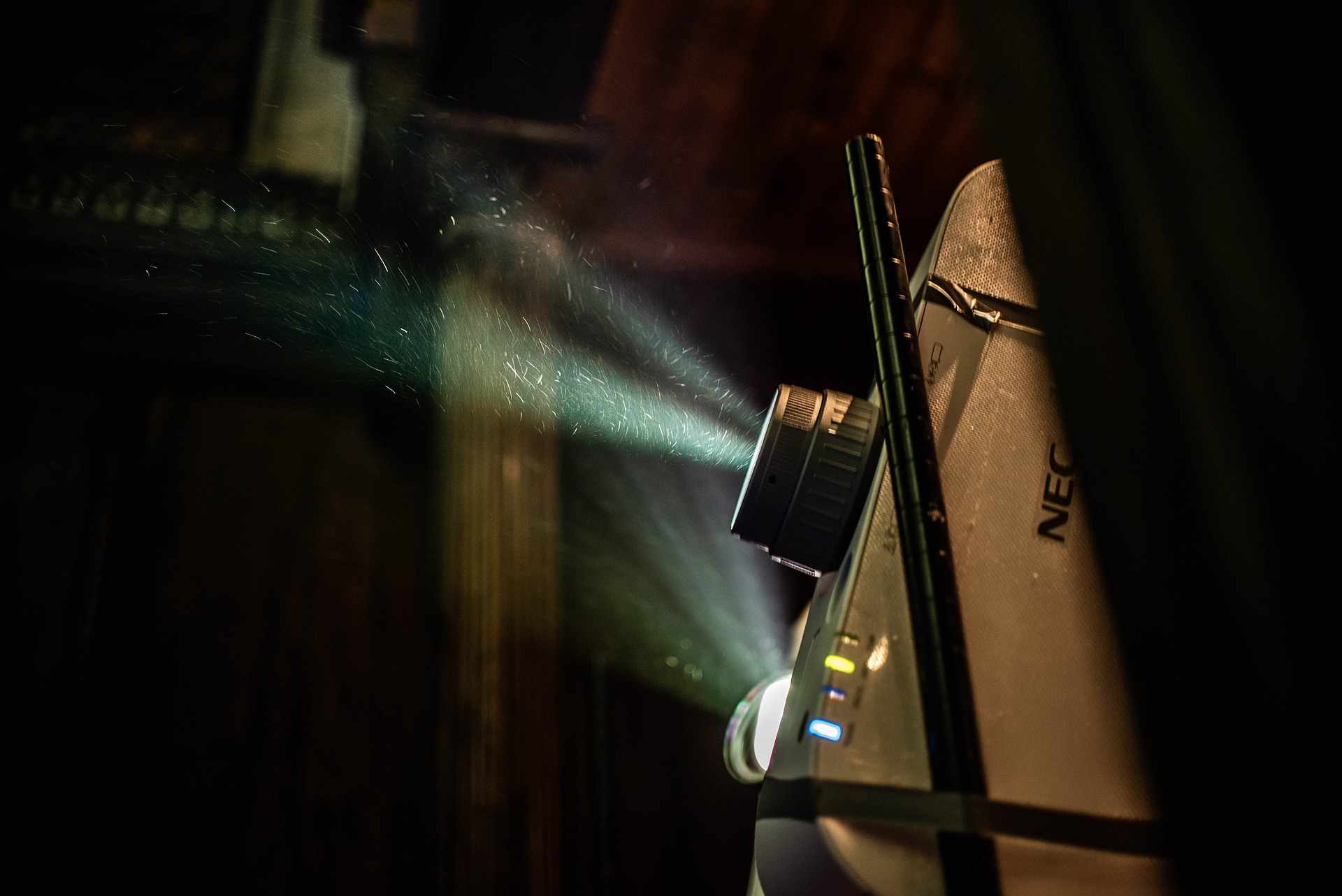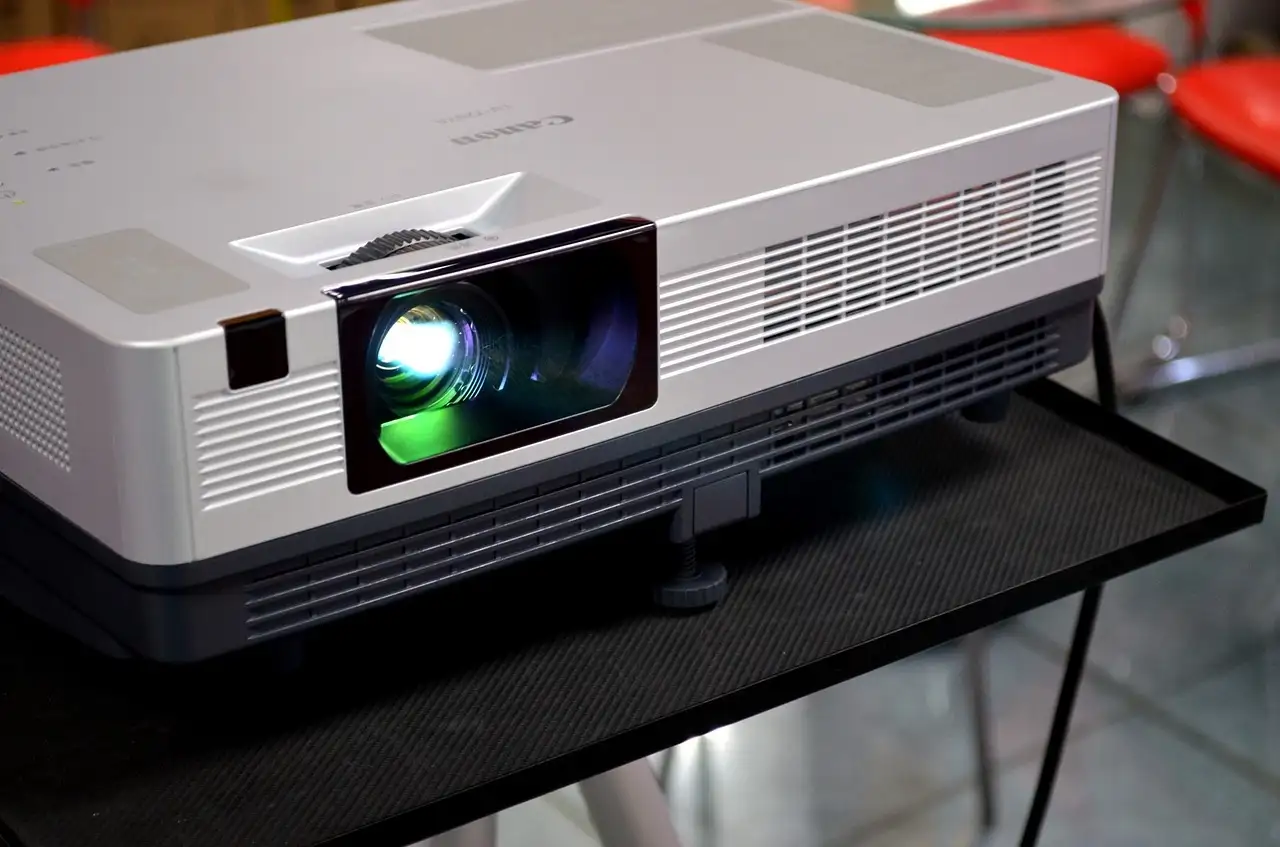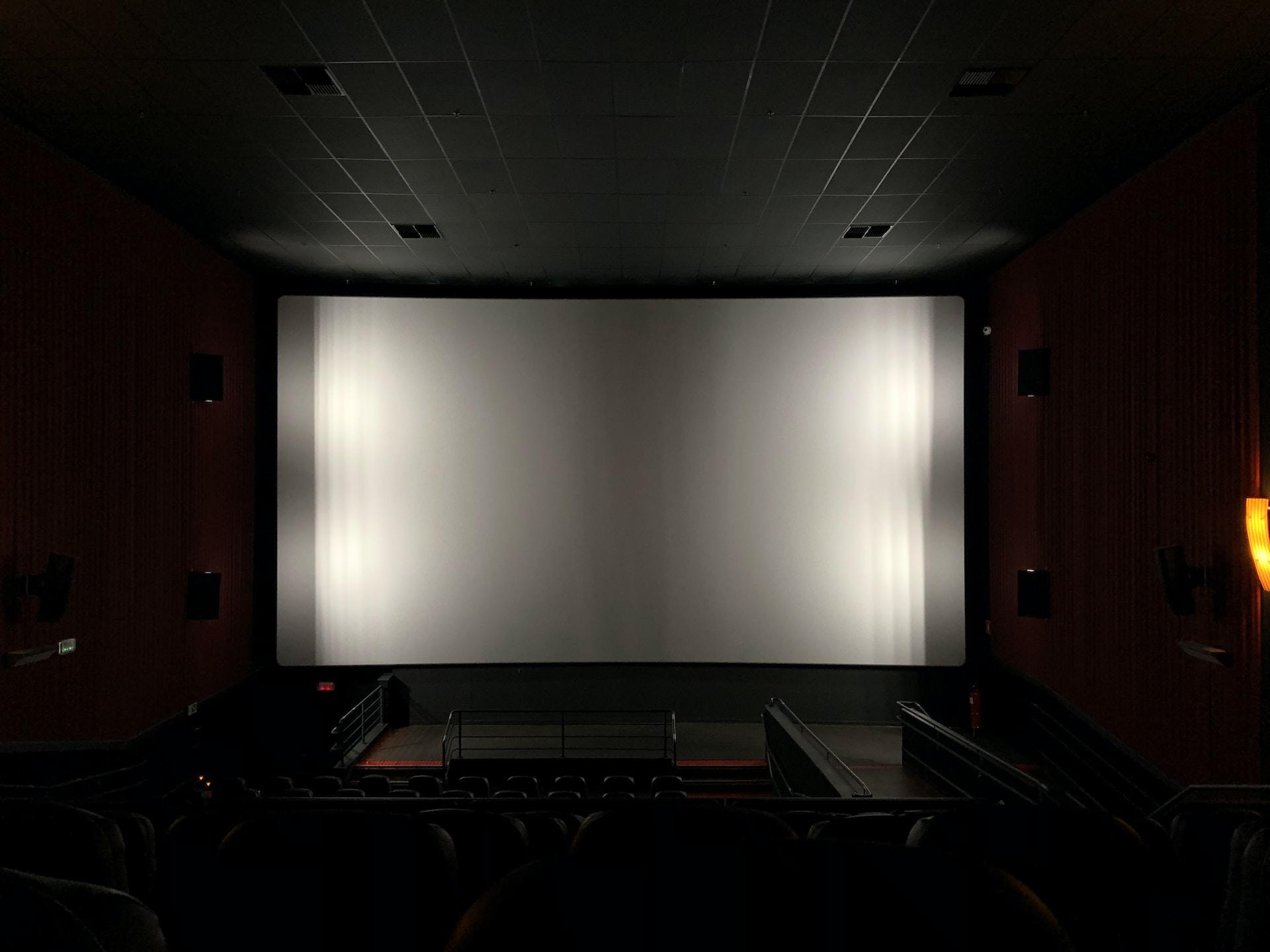Laser projector, a wonder of modern projection technology. We all know how magnificently it’s change our viewing experience on movie watching, gaming, and office presentations. But did you ever thought how this marvelous technology works? In this article, we are going to unveil how do laser projectors work.
Before the advent of laser projectors, the world witnessed many projection technologies – from the rudimentary magic lanterns of the 17th century to the bulky overhead projectors of the 20th century. As technology evolved, so did our desire for sharper, brighter, and more efficient displays.
This is where enter the laser projectors, the prodigy of modern display tech, promising unparalleled brightness, longevity, and vibrant colors.
Basic Principle: The Heartbeat of Laser Technology
Lasers, a term which springs from the acronym “Light Amplification by Stimulated Emission of Radiation”, aren’t just the stuff of sci-fi fantasies. They are incredibly intricate and yet beautifully simple in their work.
How Do They Shine So Bright?
Lasers produce light quite differently from a bulb in your bedside lamp. Here’s a simplified breakdown:
1. Energizing the Medium: Inside the laser device is a medium (could be a gas, liquid, or solid) which, when energized by an external source (like electricity), gets “excited”.
2. Stimulated Emission: This excited medium, filled with atoms raring to go, now starts to release particles of light called photons. But instead of releasing them randomly, these photons stimulate the medium to produce more photons of the exact same type.
3. The Mirrored Chamber: The laser device has mirrors at both ends, one fully reflective and one partially reflective. These mirrors cause the photons to bounce back and forth, stimulating more and more identical photons.
4. Beam Formation: Finally, a concentrated beam of light escapes through the partially reflective mirror. This is our laser beam, with all its photons marching in lockstep.
Check Best Projector Under $300.
Coherent vs. Non-Coherent Light: What’s the Deal?
You might wonder why laser light is so uniquely sharp and focused. The secret lies in its coherence.
Coherent Light: In a laser beam, the light waves (photons) all share the same frequency and phase. Picture an army of soldiers marching in perfect unison. That’s your coherent light, and that’s what lasers produce. This unified, single-phase light is what gives lasers their precision and intensity.
Non-Coherent Light: Now, imagine a bustling city street with people walking in all directions, each to their own rhythm. That’s akin to the light from traditional sources like bulbs. Their waves are all over the place in terms of frequency and phase, making the light diffused and less intense.
Components and Mechanics
The magic of a laser projector isn’t just in its laser – it’s a symphony of multiple parts, each playing its own essential tune.
Let’s embark on a journey through the belly of this beast, breaking down its components and understanding how they harmoniously produce that crisp image we so adore.
1. Light Source: The maestro leads the ensemble. This is where it all begins. As the name suggests, the light source is the primary producer of light in the projector, typically using laser diodes. These diodes produce intense, coherent light that’s perfect for the precision required in projection.
2. DLP (Digital Light Processing) Chip: The DLP chip is the heartbeat of the projector. Imagine it as a field covered in millions of small mirrors (each representing a pixel).
These mirrors tilt either towards or away from the light source, modulating the light’s reflection to create our desired image. Their rapid movement creates shades of gray that, when combined with color, result in a full-color image.
3. Color Wheel or Individual RGB Lasers: This is where the color magic happens! Some laser projectors use a single white laser that shines its light onto a rotating color wheel, filtering the light into red, green, or blue at any given moment.
On the other hand, more advanced models might utilize individual RGB lasers, directly emitting red, green, and blue light. This not only simplifies the color production process but also enhances color accuracy and brightness.
4. Optics: Once the DLP chip and colored correctly modulate the light, it’s the optics’ job to ensure this light is directed and focused onto our screen or wall. This system of lenses is crucial for ensuring the projected image is sharp and clear.
5. Cooling System: Lasers are cool – figuratively and literally! But they also produce heat. The cooling system, often a combination of heatsinks and fans, ensures that the projector maintains an optimal operating temperature. This is crucial for longevity and consistent performance.
Check out Best Projector Under $500.
How The Magic Happens:
- The light source beams coherent light.
- This light is either colored by passing through a color wheel or is directly produced in RGB through individual lasers.
- The now-colored light hits the DLP chip, where millions of mirrors dance precisely, reflecting specific amounts of light based on the image’s needs.
- The optics then take this light, focus it, and ensure it’s directed perfectly onto our viewing surface.
- All the while, the cooling system ensures that this process happens without the device overheating.
Light Modulation & Image Creation
Projecting an image isn’t just about shining a light through a lens. It’s about fine-tuning that light, manipulating its intensity, and coloring it just right, frame by frame, to create the images we see.
Shifting light is orchestrated through sophisticated methods like DLP and LCOS.
The Role of Different Image Creation Methods:
1. DLP (Digital Light Processing): The Dance of Tiny Mirrors
Imagine a sea of tiny mirrors, each representing a pixel on your screen. That’s the DLP chip for you. These mirrors can tilt either toward the light (to reflect it) or away from it.
This rapid tilting modulates the amount of light reflected, with the “on” and “off” positions of the mirrors determining the pixel’s brightness.
The end result? A grayscale image that, when combined with color (from our RGB lasers or color wheel), displays a full-color image on the screen.
2. LCOS (Liquid Crystal on Silicon): Painting with Liquid Crystals
LCOS is somewhat like the love child of traditional liquid crystal displays (LCDs) and DLP. In LCOS, a reflecting mirror substrate is directly coated with liquid crystals.
When the liquid crystal layer is subjected to a voltage, it modulates the light reflecting off the mirrored surface behind it.
The light then goes through a prism that merges the light from the red, green, and blue panels to create a full-color image.
Related: How connect projector with phone.
Crafting the Image with Lasers:
Lasers are unique not just for their intensity but also for their ability to be modulated with extreme precision. Here’s how they contribute to image creation:
1. Intensity Modulation:
Lasers can be dimmed or brightened rapidly, making them perfect for modulating the brightness of each pixel. By adjusting the intensity of the laser light source in tandem with the DLP mirrors’ position or LCOS liquid crystals’ orientation, the projector determines how bright each pixel should be.
2. Color Modulation:
In projectors using individual RGB lasers, the intensity of each colored laser can be modulated to create the full spectrum of colors.
For instance, to get yellow, the red and green lasers would shine brightly while the blue remains dim. On the other hand, projectors using a white laser with a color wheel rely on the wheel’s rotation to filter the light into red, green, or blue at the right moment, synchronized with the DLP or LCOS system.
Advantages & Limitations of Laser Projectors
Advantages: The Glowing Peaks
Brightness: Laser projectors are often brighter than their traditional counterparts. The inherent intensity and coherence of laser light mean they can deliver clear images even in well-lit rooms.
Energy Efficiency: Lasers are notably efficient as light sources. They convert a higher percentage of the input energy into light, translating to less energy wastage and reduced power bills.
Longevity: With laser light sources, there’s no bulb that can blow out. This means they often have a longer operational lifespan, sometimes reaching up to 20,000 hours or more.
Color Accuracy: Lasers can produce a broader color gamut, especially when used as individual RGB sources. This means richer, more accurate colors, giving viewers an immersive and true-to-life experience.
Compactness: Without the need for bulky bulbs and their cooling systems, laser projectors can be more compact and lightweight, paving the way for portable and streamlined designs.
Limitations: The Cast Shadows
Speckle Patterns: A common challenge with laser projection is the appearance of speckle patterns. This grainy interference pattern arises from the coherent nature of laser light.
Cost: High-quality laser projectors tend to be more expensive than traditional lamp-based projectors.
Safety Concerns: Lasers, especially powerful ones, come with safety considerations. There’s potential for eye damage if someone was to look directly into the beam.
Heat Production: Even though lasers are more efficient, they still produce heat. Effective cooling systems are essential; in some high-power projectors, these systems can become bulky or noisy.
Related: What is Short Throw Projector.
Safety Considerations
Now that we know how do laser projectors work and how versatile it is, but with great power comes great responsibility. In laser projection, ensuring safety is paramount, given the intense and coherent nature of laser light
Laser Classifications: Understanding the Risks
Depending on their power and potential risk to human eyes and skin, Lasers are categorized into classes.
Here’s a simplified look at these classifications:
- Class 1: These are low-power lasers that are generally considered safe under normal usage. Many laser projectors for home use fall into this category.
- Class 2: These are visible lasers and might cause eye damage if stared at for extended periods.
- Class 3R, 3B: Here, the risk starts to increase. These lasers can cause eye damage if directly looked at. Some professional laser projectors might fall into these categories.
- Class 4: These are the high-power lasers used in industrial applications and carry significant risks, including eye and skin damage and even fire hazards.
Potential Risks in Projection Systems
1. Eye Damage: Direct exposure to a laser beam, even from a reflection, can lead to eye injuries.
2. Heat and Fire Hazards: High-powered lasers can generate significant heat and might pose fire risks if not properly cooled and contained.
Measures to Ensure User Safety
Laser projector manufacturers take these risks seriously and implement a variety of measures to mitigate them:
1. Interlocking Systems: Some projectors are equipped with interlocking systems that disable the laser if the cover is removed or if a fault is detected.
2. Protective Housing: The laser assembly is often encased in protective housing to prevent accidental direct exposure to the laser beam.
3. Cooling Systems: Effective cooling not only ensures efficiency but also safety by preventing overheating.
4. Compliance with Standards: Projectors are designed to comply with international safety standards such as IEC 60825-1, ensuring that they meet the accepted guidelines for laser safety.
4. Clear Labeling: Lasers within projectors are clearly labeled with their classification and potential hazards, providing clear guidance on handling and operation.
5. Integrated Safety Features: Some projectors include eye-safety features that reduce the laser output to safe levels if a person or object is detected too close to the lens.
Future of Laser Projection
The future isn’t just bright; it’s laser-bright! As laser projection technology matures, innovators are finding more ways to tweak, improve, and apply this tech in new domains.
Current Trends and Innovations
Improved Speckle Reduction: As we highlighted earlier, speckle patterns are a limitation in laser projection. The industry is heavily invested in research to reduce or eliminate this interference, promising even clearer imagery.
Higher Efficiency and Brightness: Continued innovations in laser tech are resulting in brighter outputs for less energy, setting the stage for even more energy-efficient models in the near future.
Miniaturization: Portable, pocket-sized laser projectors are becoming a reality. These projectors will be powerful enough to cast large, clear images, making presentations on-the-go a breeze.
Enhanced Color Gamut’s: As laser technology advances, we’re inching closer to projectors capable of displaying almost the full spectrum of visible colors, promising cinema-quality visuals in our living rooms.
Interactive Projection: Some of the latest laser projectors come with interactive capabilities, allowing users to manipulate projected images in real-time, like a touch screen but on a much larger scale.
Potential Applications and Benefiting Industries
Education: Interactive laser projectors can revolutionize classrooms, turning any wall into an interactive board and enhancing engagement and learning.
Medical Field: Precision is crucial in medicine. Advanced laser projectors can assist in detailed visualizations during complex surgeries or in medical training simulations.
Retail and Advertising: Imagine walking into a store where the floor guides you with arrows to the latest sale, all projected and updated in real-time.
Automotive Industry: Heads-up displays (HUDs) using laser projection could display crucial driving info on car windshields, ensuring drivers don’t have to look away from the road.
Entertainment and Gaming: Home theaters will reach new heights in quality, and augmented reality games can be played out on city streets in real-time with portable laser projectors.
Architectural and Interior Design: Laser projectors can help visualize design concepts on an absolute scale, enabling clients to “walk through” spaces before they are built.
Laser projectors are not just the future – they are the present. They stand as a testament to humanity’s relentless pursuit of better, clearer, and more efficient ways to depict our world.
From cinema’s epic tales to a student’s humble presentation, laser projectors are lighting the way forward, ensuring every story is told in the best light possible. Here’s to a brighter, more colorful tomorrow!
FAQs
On How Do Laser Projectors Work
1Q. What is a laser projector?
A: A laser projector uses lasers as the primary light source to produce an image, rather than traditional lamps found in older projectors.
2Q. Are laser projectors brighter than traditional lamp projectors?
A: In many cases, yes. Lasers can maintain a consistent brightness level over longer periods than traditional lamps, which tend to dim as they age.
3Q. Are there any health risks associated with using laser projectors?
A: Laser projectors are designed to be safe for regular use. However, like any projector, it’s not advisable to stare directly into the lens as it can be harmful to the eyes.
4Q. Are laser projectors suitable for home theaters?
A: Yes, many laser projectors are designed specifically for home theater use. They offer excellent image quality, brightness, and contrast, making them a top choice for many home theater enthusiasts.
5Q. Do laser projectors produce heat?
A: All projectors produce some amount of heat, and laser projectors are no exception.
6Q. Is there any “rainbow effect” in laser projectors?
A: The “rainbow effect” is typically associated with single-chip DLP projectors that use a rotating color wheel. Since laser projectors don’t use color wheels, they’re less prone to this effect.







Leave a Reply